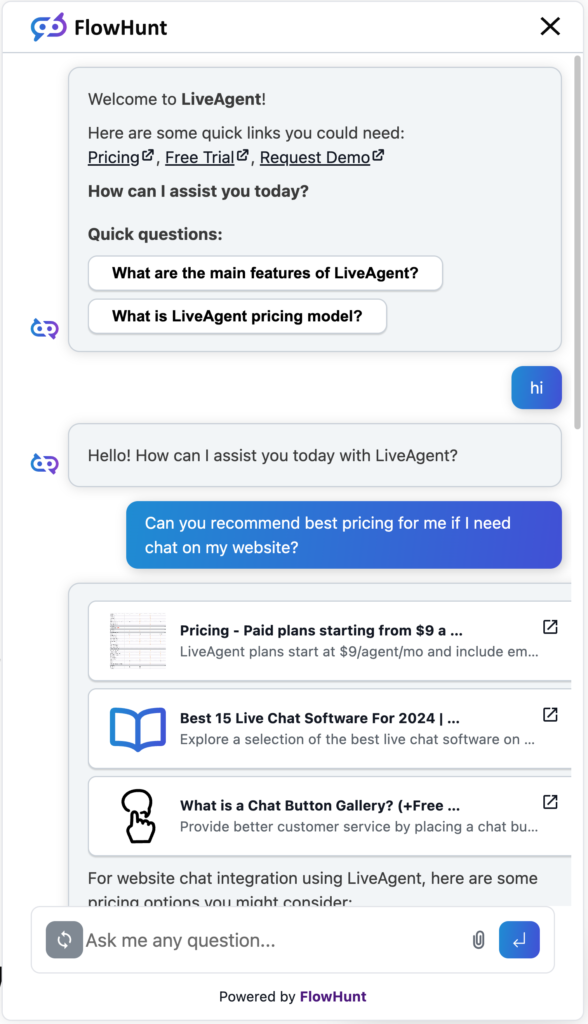Scripted Chatbots vs AI Chatbots
Discover how scripted chatbots and AI chatbots differ in technology, flexibility, and business impact—helping you choose the right solution for your needs.

Definitions
What are Scripted Chatbots?
Scripted chatbots follow set rules to talk with users. They stick to pre-made scripts and can only answer within those limits. These chatbots have been around since the 1960s, starting with programs like ELIZA at MIT. ELIZA matched patterns and swapped words to make it seem like it understood conversations. But it didn’t really get what users were saying – it just followed its programming. You’ll often see scripted chatbots handling simple tasks where they can guess what users might ask, like answering common questions or giving basic help to customers.
What are AI Chatbots?
AI chatbots are smarter and can talk more like humans. They use fancy tech like natural language processing bridges human-computer interaction. Discover its key aspects, workings, and applications today!") and machine learning to get what you’re saying and reply in a natural way. These chatbots run on big language models like GPT-4. This lets them understand the situation, learn as they talk to you, and come up with answers on their own instead of just reading from a script. You’ve probably heard of AI chatbots like ChatGPT from OpenAI or Google’s chatbots that use LaMDA. They can have real conversations and do jobs that need some thinking and awareness of what’s going on. More and more companies use AI chatbots for customer service, virtual helpers, and other jobs where they need to give personal attention to each user.
The main difference? Scripted chatbots follow a set path, while AI chatbots use smart tech to have more flexible chats. Knowing how they’re different helps you pick the right chatbot for what you need, so users get the best help possible.
This image visually represents the differences between scripted chatbots and conversational AI chatbots, highlighting how each interacts with users.
Scripted chatbots and AI chatbots have key differences in how they work and what they can do. Let’s explore these differences to help you understand which type might be best for different situations.
Scripted chatbots use pre-written responses based on specific user inputs. They follow a set path, like a flowchart. When you ask a scripted chatbot about store hours, it gives you the answer it was programmed with. But if you ask something unexpected, it might get confused and not know how to respond.
AI chatbots are more advanced. They use natural language processing and machine learning to understand and respond to a wider range of questions. These chatbots can pick up on context and nuances in your messages. They remember past conversations and can adjust their tone based on how you’re feeling. This makes talking to an AI chatbot feel more natural and personalized.
Flexibility is a big difference between the two. Scripted chatbots are good for simple, common questions but struggle with anything complex or unexpected. They might need to hand you over to a human if they can’t help.
AI chatbots are much more flexible. They learn from every conversation, getting better over time. They can handle tricky questions and even understand when you’re being vague. This makes them useful in many fields, from customer service to healthcare.
To sum up, scripted chatbots follow set rules and are best for basic tasks. AI chatbots use advanced technology to provide more human-like conversations and can adapt to different situations. Knowing these differences helps you pick the right chatbot for your needs.
Scripted Chatbots vs. AI Chatbots: Comparison Table
| Feature | Scripted Chatbots | AI Chatbots |
|---|---|---|
| Response Type | Pre-written responses | Dynamic, based on machine learning models |
| Flexibility | Limited to pre-defined scenarios | Highly flexible, can handle unexpected inputs |
| Learning Ability | No learning from interactions | Learns and improves from each interaction |
| Contextual Understanding | Minimal | High, with ability to understand nuances |
| Setup Complexity | Simple, requires no technical expertise | Complex, requires training and fine-tuning |
| Ideal Use Case | Basic inquiries and tasks | Complex and varied customer interactions |
Table Source: Adapted from information obtained from Table Duck
Scripted Chatbots: Practical Uses
Scripted chatbots follow set rules to handle specific tasks. You’ll often see them in customer service, answering common questions about orders or basic support issues. This frees up human agents and gives customers quick answers.
These chatbots also help with lead generation. They ask potential customers questions to gather info, which helps sales teams focus on the most promising leads.
Many businesses use scripted chatbots for scheduling appointments. In healthcare or beauty services, you can book a time slot without talking to a person, making the process smoother for everyone.
AI Chatbots: Advanced Applications
AI chatbots use machine learning to offer smarter, more flexible help. In customer service, they can understand what you’re asking and give personalized answers. They learn from each conversation, getting better over time.
When you’re shopping online, AI chatbots can suggest products based on what you like and have bought before. They help you find items, answer questions, and even help you buy things, which can boost sales and make customers happier.
In healthcare, AI chatbots do a lot. They give medical info, check symptoms, and remind you about appointments. This helps medical staff focus on treating patients. These chatbots also offer initial mental health support and can connect you with professionals if needed.
Banks and financial companies use AI chatbots too. You can ask about your account, see your transactions, and get financial advice. These chatbots can handle complex money matters, which helps build trust and makes services more efficient.
Both types of chatbots are useful in many fields, and as technology improves, they’ll likely be able to do even more.
Chatbots have become a game-changer in how businesses talk to customers. There are two main types: scripted chatbots and AI chatbots. Each has its own strengths, fitting different business needs and tech abilities.
Scripted Chatbots: The Simple Solution
- Easy on the Wallet: These chatbots are cheaper to set up and run. They work with set scripts and rules, making them great for businesses that don’t have big budgets but still want to automate some tasks.
- Quick to Get Started: You don’t need complex coding skills to set up scripted chatbots. They’re perfect for simple jobs like answering common questions or basic customer help.
- You’re in Control: With scripted chatbots, you know exactly what they’ll say. This is good if you want to keep a close eye on how your business talks to customers.
- Simple Upkeep: When you need to change something, you just update the scripts. This works well if your business doesn’t change its services often.
- No Need for Lots of Training: Unlike AI chatbots, these don’t need tons of data or complex tweaks. This makes them accessible even if you’re not a tech expert.
AI Chatbots: The Smart Choice
- Better Chats: AI chatbots use smart tech to understand and talk more like humans. This makes conversations with customers smoother and more engaging.
- Handles Tough Questions: These chatbots can deal with complex queries and understand context. They’re great for industries like healthcare or finance where personalized chats are key.
- Grows with Your Business: AI chatbots learn from every chat, getting better over time. They can adapt to new situations without you having to update them all the time.
- Gives You Insights: By analyzing chats, these bots can tell you a lot about what your customers like and want. This helps you make smarter business decisions.
- Always On Duty: AI chatbots can work 24/7 across different time zones. This means your customers can get help anytime, making your service much more efficient.
To sum up, scripted chatbots are great for simple tasks and businesses on a budget. AI chatbots shine when you need to handle complex situations and want a more advanced solution. Think about what your business needs, what resources you have, and what your customer service goals are when choosing between the two. Both can really boost how efficiently you work and how happy your customers are.
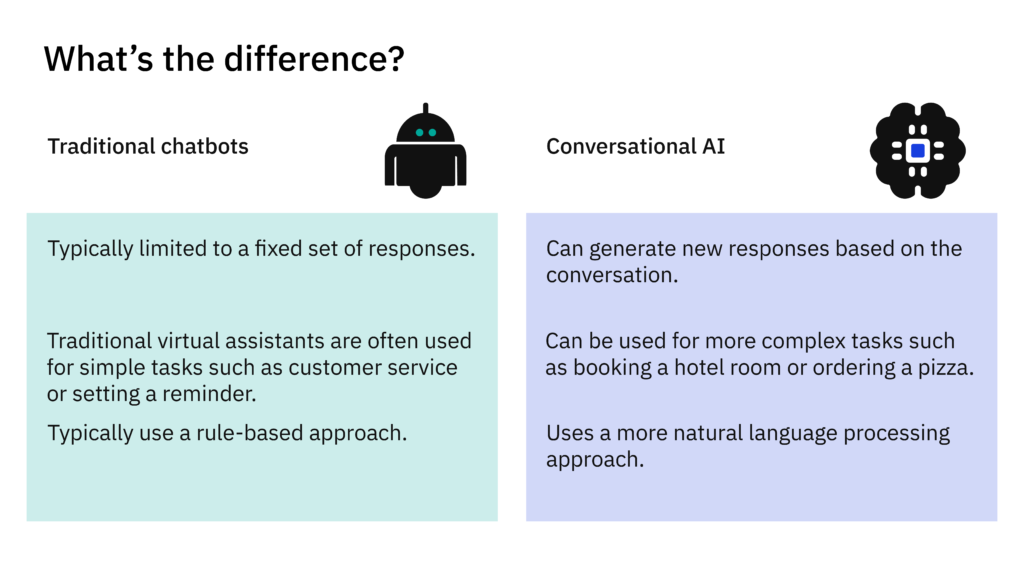
Image Source: Transcom
Chatbot technology is changing fast, bringing new possibilities and challenges. As more businesses use these smart systems, several key trends are shaping their future.
- New tech is making chatbots better. They’re getting smarter at understanding and talking like humans, thanks to improvements in Natural Language Processing. This means you’ll soon chat with bots that feel more natural and can handle tougher questions. New AI models are helping with this, making bots more conversational.
- You don’t need to be a tech expert to create chatbots anymore. New platforms let people with little coding knowledge build advanced chatbots. This means more businesses can make custom bots for their needs without hiring programmers.
- Voice-activated chatbots are becoming more common. As voice recognition gets better, you’ll likely talk to chatbots through devices like Amazon’s Alexa or Google Assistant. This lets you use chatbots hands-free, just by speaking.
- More industries are using chatbots. In customer service, bots handle simple questions, letting human staff focus on harder issues. This makes things faster for customers and more efficient for businesses.
- Healthcare is finding new uses for chatbots. They can help you book appointments, remind you to take medicine, and even give basic medical advice. This supports the work of doctors and nurses.
- Online shopping is getting better with chatbots. They can suggest products based on what you like and have bought before. This helps stores sell more and keeps customers coming back.
As chatbots get smarter and easier to use, more businesses will start using them. This will change how companies talk to their customers. By keeping up with these changes, businesses can use chatbots to work better and make customers happier.
Here is a visual insight into the trends:
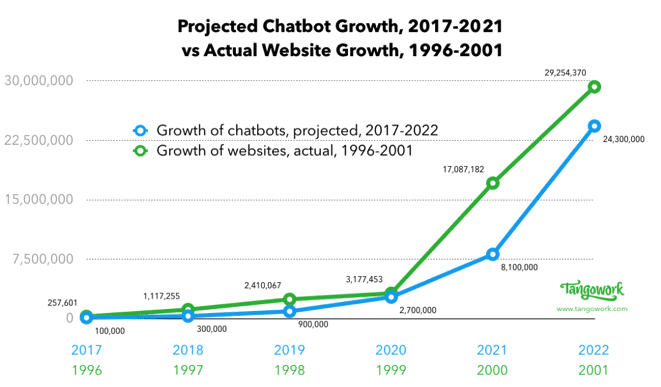
Figure: Growth in chatbot usage over the years. Source: Engati
These images illustrate the growing importance and integration of chatbots in various sectors, highlighting their evolving capabilities and widespread adoption.
Chatbots are changing how businesses interact with customers. Let’s look at how they’re being used and what the numbers tell us about their impact.
- Scripted chatbots are great for simple tasks. Many online stores use them to answer common questions, help with orders, and track packages. These chatbots follow set rules and give quick, consistent answers. For example, H&M’s chatbot helps shoppers find products and check if items are in stock. This takes a lot of work off the shoulders of human customer service agents.
- AI chatbots can handle more complex jobs. In healthcare, Babylon Health uses AI chatbots to do initial patient checkups. The chatbot asks about symptoms and gives medical advice, making it easier for doctors to diagnose and treat patients early on.
- Banks are using AI chatbots too. Bank of America has a chatbot called Erica that helps customers with banking tasks, gives financial advice, and warns about unusual account activity. Customers like Erica because it gives personalized help and smart answers.
The chatbot market is growing fast. Experts think it will be worth $9.4 billion by 2024, growing about 30% each year from 2019 to 2024. More businesses want chatbots to talk to customers, save money, and use new AI technology.
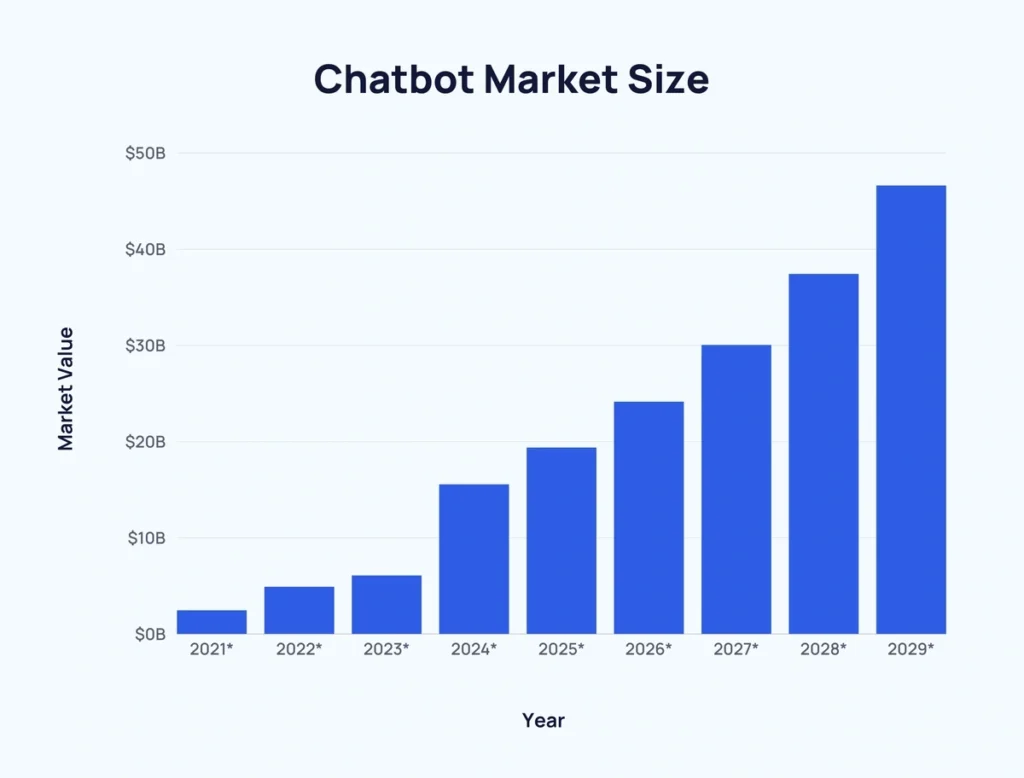
Source: Exploding Topics
Companies using chatbots are saving money on customer service – some up to 30%. Chatbots also help increase sales by giving quick help and suggesting products customers might like.
Both scripted and AI chatbots are making big changes in many industries. They’re helping businesses talk to customers better, work more efficiently, and grow. As chatbot technology keeps improving, we can expect to see even more ways they’ll be used to help businesses and customers alike.
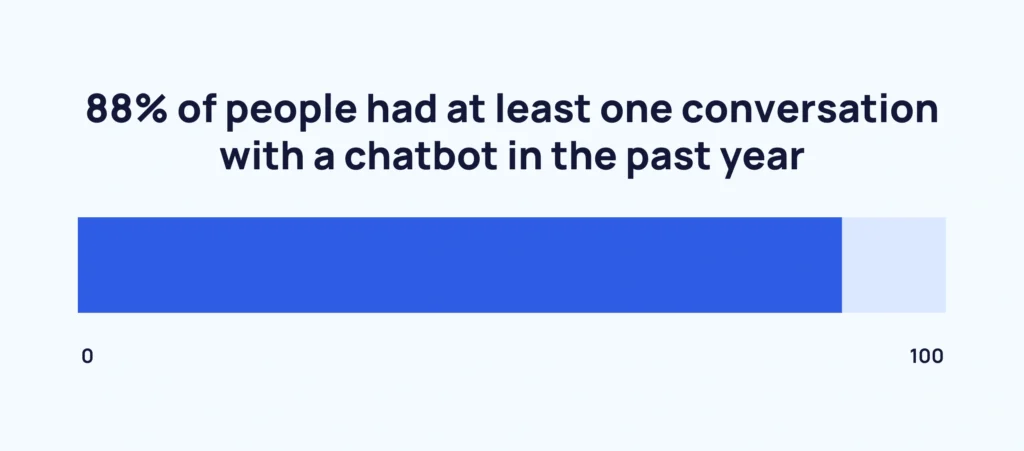
Source: Tidio
The above images and data vividly illustrate the rapid growth and adoption of chatbot technology across various sectors, emphasizing their transformative impact on customer service and operational efficiency.
Understanding the difference between scripted chatbots and AI chatbots is crucial for effectively leveraging these technologies in various applications.
Scripted chatbots, also known as rule-based or decision-tree chatbots, operate based on predefined scripts and rules. They follow a set of instructions programmed by developers and typically respond to specific keywords or phrases. These chatbots
Frequently asked questions
- What is the main difference between scripted and AI chatbots?
Scripted chatbots follow predefined rules and scripts for basic interactions, while AI chatbots use advanced technologies like natural language processing and machine learning to offer dynamic, context-aware, and human-like conversations.
- When should I use a scripted chatbot versus an AI chatbot?
Scripted chatbots are ideal for simple, repetitive tasks and straightforward inquiries, making them suitable for businesses with limited budgets or basic automation needs. AI chatbots are better for complex, personalized, and evolving customer interactions.
- What are the benefits of AI chatbots for businesses?
AI chatbots provide flexible, personalized support, learn from every conversation, operate 24/7, and deliver insights about customer preferences, helping businesses improve efficiency, customer satisfaction, and decision-making.
- Can chatbots save businesses money?
Yes, both scripted and AI chatbots help businesses save on customer service costs—sometimes by up to 30%—by automating responses, reducing workload for human agents, and increasing operational efficiency.
- Are chatbots becoming more common in industries beyond customer service?
Absolutely. Chatbots are increasingly used in healthcare, finance, e-commerce, and more, for tasks like appointment booking, product recommendations, financial advice, and initial medical consultations.
Ready to build your own AI?
Smart Chatbots and AI tools under one roof. Connect intuitive blocks to turn your ideas into automated Flows.

